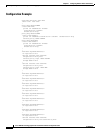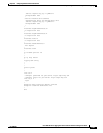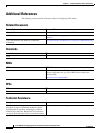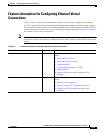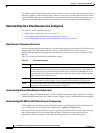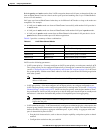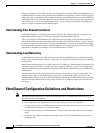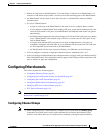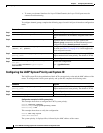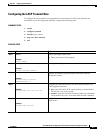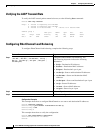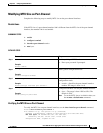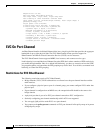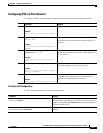
9-4
Cisco ASR 901 Series Aggregation Services Router Software Configuration Guide
OL-23826-09
Chapter 9 Configuring EtherChannels
EtherChannel Configuration Guidelines and Restrictions
On ports configured to use LACP, LACP tries to configure the maximum number of compatible ports in
an EtherChannel, up to the maximum allowed by the hardware (eight ports). If LACP cannot aggregate
all the ports that are compatible (for example, the remote system might have more restrictive hardware
limitations), then all the ports that cannot be actively included in the channel are put in hot standby state
and are used only if one of the channeled ports fails. You can configure an additional 8 standby ports
(total of 16 ports associated with the EtherChannel).
Understanding Port-Channel Interfaces
Each EtherChannel has a numbered port-channel interface. The configuration that you apply to the
port-channel interface affects all LAN ports assigned to the port-channel interface.
After you configure an EtherChannel, the configuration that you apply to the port-channel interface
affects the EtherChannel; the configuration that you apply to the LAN ports affects only the LAN port
to which you apply the configuration. To change the parameters of all ports in an EtherChannel, apply
the configuration commands to the port-channel interface, for example, Spanning Tree Protocol (STP)
commands or commands to configure a Layer 2 EtherChannel as a trunk.
Understanding Load Balancing
An EtherChannel balances the traffic load across the links in an EtherChannel by reducing part of the
binary pattern formed from the addresses in the frame to a numerical value that selects one of the links
in the channel.
EtherChannel load balancing can use MAC addresses or IP addresses. EtherChannel load balancing can
use either source or destination or both source and destination addresses or ports. The selected mode
applies to all EtherChannels configured on the router. EtherChannel load balancing can use MPLS Layer
2 information.
Use the option that provides the balance criteria with the greatest variety in your configuration. For
example, if the traffic on an EtherChannel is going only to a single MAC address and you use the
destination MAC address as the basis of EtherChannel load balancing, the EtherChannel always chooses
the same link in the EtherChannel; using source addresses or IP addresses might result in better load
balancing.
EtherChannel Configuration Guidelines and Restrictions
Note When EtherChannel interfaces are configured improperly, they are disabled automatically to avoid
network loops and other problems.
• The commands in this chapter can be used on all LAN ports in the Cisco ASR 901.
• Configure all LAN ports in an EtherChannel to use the same EtherChannel protocol; you cannot run
two EtherChannel protocols in one EtherChannel.
• Configure all LAN ports in an EtherChannel to operate at the same speed and in the same duplex
mode.
• LACP does not support half-duplex. Half-duplex ports in an LACP EtherChannel are put in the
suspended state.



